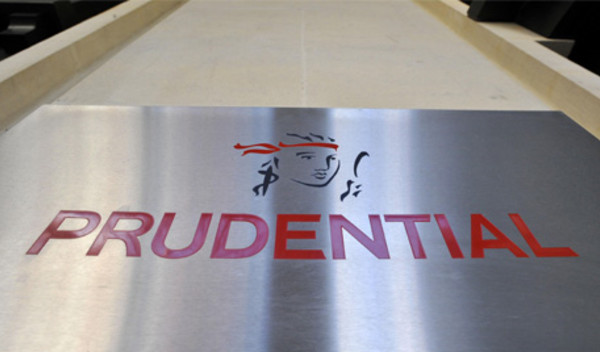

With a distinctive name and a brain reputedly keener than that of Stephen Hawking, the current chief executive of Prudential, Tidjane Thiam cannot help but be in the limelight. We now hear that he is moving to pastures new.
He has certainly been newsworthy in his five-year tenure at the Pru. Initially it was for a failed merger with AIA. Much worse was a very public censure by the then-FSA for keeping them out of the loop when merger negotiations were taking place. Most people would have paid the price. Not so Mr Thiam. He obtained resounding backing from his board, who almost stuck two fingers up at the FSA.
Since then he has concentrated on business issues and the results to date have been impressive. A united board, a focused strategy, unwaveringly attended to has been the approach adopted, to great success.
The three key metrics they use are International Financial Reporting Standards operating profit, new business profit and cash. These are three of the four most important metrics, so they have selected wisely. So the key questions are:
(1) whether the strategy is the correct one;
(2) whether the figures for the metrics have been appropriately calculated; and
(3) what does it have to say regarding the fourth most important metric: customer satisfaction
When Prudential embarked on its current strategy I asked in Financial Adviser whether it made sense for the Pru to focus its attention on the Far East. It changes the nature of the firm as there is no synergy between the UK and the Far East. If indeed the future lies there, then it is a matter for the shareholders to decide so management can return capital to its shareholders. It is surprising the board gave unanimous backing to the strategy.
Is that still the case? The chairman who appointed Mr Thiam is no longer there.
So what are the facts? The figures for operating and new business profit are good:
| IFRS | New Business | |
| Operating Profit | Profit | |
| 2012 | £2,520m | £2,452m |
| 2013 | £2,954m (+17%) | £2,843m (+16%) |
| 2014 | £3,186m ( +8%) | £2,126m (+10%) |
There is an inconsistency in the reporting of new business profit when comparing 2013 to 2014. Pru claims a 10 per cent increase when the reported figure compared to last year’s reported figure should be down. The net cash remittances from business units is a whopping £1.48bn.
Increasingly, Asian business is of importance to the Prudential. One third of its IFRS operating profit (2014) came from that continent. Indonesia, Hong Kong and Singapore are of great importance. Judging by its rapid growth and rapid recycling of capital I assume that it is selling old-fashioned front end-loaded policies paying initial commission, many of which are whole life or protection plans. The Pru also claims to have a major share of the Sharia-compliant business. There are warning bells in both here.
I remember looking at the figures of a major local Indonesian company. Three things stood out: a high level of lapses and bad debts and material related-party transactions, with some of the directors, who are also shareholders, having major financial interests in connected companies. It is not uncommon in many Asian countries – not that the West is immune to this – for companies that started out with private capital and then sought external capital to expand, for the original shareholders to treat the company as their own fiefdom – think of Satyam in India.
In its half-yearly Accounts (Note 16) the Pru gives the present value of new business premiums. From this it can be deduced that the multiplier to the regular premiums in the first half of 2014 was 5.0 in Asia; in Indonesia it is a pitiful 3.7. This suggests that the company itself is expecting a high lapse rate. If the products are front end-loaded the shareholders are protected but it is no way to build a lasting business. What we have rejected in this country as being unacceptable has been exported.
I would therefore expect a lower p/e earnings ratio in respect of its Asian business.
What about UK business? Regular premium business is negligible and the bulk is annuities, with profit bonds and investment business. The annuity market has been destabilised and its large volume of in force business is at risk. I would not rule out the possibility of the Pru trying to cash in on this by offering to buy back annuities on terms that generate greater profit for them than they would have been expected to make had the annuity run its normal course. However, this depends upon two things:
1. The client being prepared to sell even if he is being actuarially stitched up because he would rather have the cash.
2. The Pru being able to sell the backing investments at or very close to the price at which they are held in its balance sheet.
With the first point, there is the additional risk that, notwithstanding that the client accepted the deal without prompting by the Pru, they might at a future date be accused of mis-selling.
Is the approach consistent with SSAP9? Has the Pru taken credit for profit on the sales of products that have not yet been completely built and on which profit cannot be reliably estimated? Do the expense assumptions adequately allow for likely future costs required to maintain the policies? If not, it is publishing profits that subsequently would be shown to be impaired by these additional costs.
Take annuities, for example, which the Prudential regards as being profitable. They would be, if the investments did not default and people did not live too long. We cannot be sure of either until several years down the road. Thus SSAP9 indicates that not much of the potential profit should be taken credit for in the year of sale. And yet the Pru takes credit for liquidity premium of nearly 90 basis points and capitalises it; defaults are assumed to occur uniformly over the lifetime of the investment, which is not the most prudent assumption.
This is a very important measure, particularly for a company doing a lot of annuity business, which is very slow in releasing capital. Rapid recycling of capital enables it to be re-utilised in writing further new business without seeking extra capital. So the Pru has been quite successful here.
So time will tell whether Mr Thiam’s legacy is a positive one or not. One thing his successor could usefully do would be to break up the company so that its Asian business stood on its own leaving the UK and US uncontaminated.
Icki Iqbal is a former director of Deloitte
Key points
Since the failed merger with AIA, Tidjane Thiam at Prudential has concentrated on business issues, and the results to date have been impressive.
The successor could break up the company so that its Asian business stands on its own.



